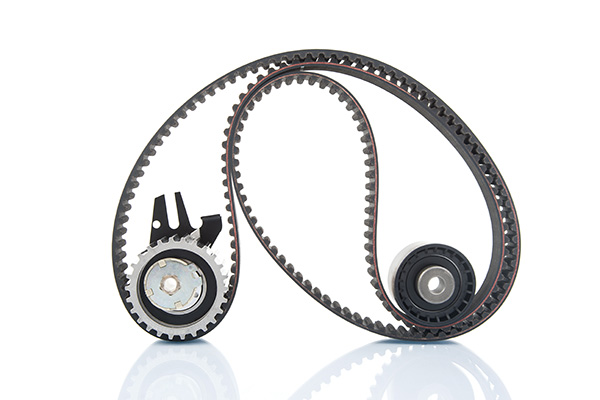
Belts may not seem like a big deal when you glance under the hood, but some play a much more critical role than others. In particular, the timing belt is one component that you never want to overlook. While both the timing belt and accessory belts are essential for your engine’s operation, one failure is far more serious than the other.
Knowing the difference between these belts and why a timing belt failure can be catastrophic will help you avoid costly repairs and engine damage.
What Does the Timing Belt Do
The timing belt keeps your engine’s internal components moving in perfect sync. Specifically, it connects the crankshaft and camshaft, ensuring that the valves open and close at the right time in relation to the pistons. This precise timing is what allows your engine to run efficiently and avoid internal collisions between components.
Timing belts are usually made of reinforced rubber and have teeth that match the gears they drive. They’re commonly found in many four- and six-cylinder engines, although some engines use timing chains instead.
What About Accessory Belts
Accessory belts (often called serpentine belts) drive external components like the alternator, air conditioning compressor, power steering pump, and sometimes the water pump. These belts don’t directly affect your engine’s internal timing or combustion cycle.
They’re important, but if one breaks, your vehicle can often be driven for a short distance or at least restarted after replacing the belt. In contrast, a broken timing belt can cause immediate and irreversible engine damage.
What Happens When a Timing Belt Fails
Timing belts wear gradually over time and typically don’t give much warning before they fail. If a timing belt snaps while the engine is running, the consequences can be severe, especially in what's known as an interference engine.
In an interference engine, the pistons and valves occupy the same space at different times. When the timing belt fails, the synchronization is lost, and the pistons can crash into the valves. This often results in bent valves, damaged pistons, and, in extreme cases, a ruined engine. The repairs can be extensive and expensive.
Even in non-interference engines, a broken timing belt will immediately stop the engine, leaving you stranded.
What Happens When an Accessory Belt Fails
While less serious, an accessory belt failure can still be inconvenient. If the serpentine belt breaks, you might lose power steering, charging capacity, or air conditioning. In some vehicles, it can also cause overheating if the water pump is driven by the belt.
However, accessory belt failures rarely result in internal engine damage. Replacing a broken serpentine belt is a relatively quick repair, and most of the time, it doesn’t require tearing into the engine.
How to Prevent Timing Belt Failure
Timing belts have a limited service life and should be replaced according to your vehicle’s maintenance schedule—usually between 60,000 and 100,000 miles. Because the belt is hidden behind engine covers, you won’t be able to inspect it easily without removing several components.
Many manufacturers recommend replacing the water pump and tensioner at the same time since those parts often wear together and are located in the same area. Skipping a scheduled timing belt replacement is a gamble that isn’t worth the risk.
Don’t Ignore Warning Signs
Timing belts often fail without obvious symptoms, but sometimes you may notice a ticking sound from the engine, difficulty starting, or a rough idle. Accessory belts, on the other hand, might squeal, slip, or show visible cracking before they give out.
No matter the type of belt, it’s a good idea to have them checked during regular maintenance, especially if your vehicle is approaching high mileage.
Cottman of Waldorf – Timing Belt Replacement and Inspections in Waldorf, MD
At Cottman of Waldorf, we take engine timing seriously. If your vehicle is due for a timing belt replacement or you’re unsure of its condition, our team can inspect and replace it before a failure leaves you with major engine damage.
Protect your engine and wallet by scheduling a belt inspection with our experienced technicians today.